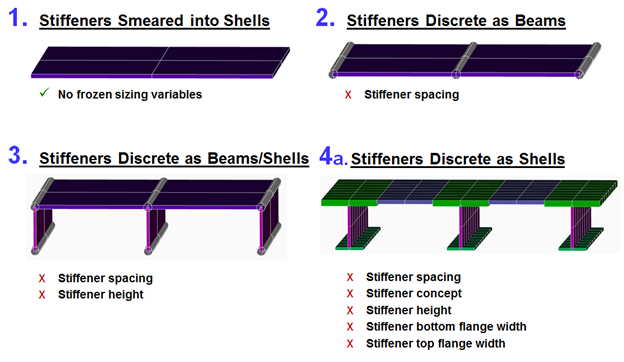
The primary advantage of using smeared models is that the models are much easier to construct. There is less labor involved in meshing because the grids do not have to be aligned with the stiffener spacing as required by the discrete techniques. Discrete modeling techniques 3 and 4 require that stiffener grids be located in the correct Z axis depth to represent the web height. Technique 4 can require twenty or more times the number of elements as the smeared technique to achieve the same level of accuracy.
The primary advantage of discrete models is that unique stiffener buckling, crippling, strength, and local buckling margins of safety may be reported for each skin and stringer segment component. Additionally, the discrete techniques 2, 3, 4, and 5 will capture the effects of having non-uniformly spaced stiffeners and stiffener terminations.
Depending on the discrete modeling technique, certain sizing variables are dependent on the mesh geometry. Therefore these variables cannot be optimized (are frozen). Smeared modeling is valuable for preliminary design because all sizing variables are available for optimization.
Frozen sizing variables are automatically locked out so no values may be entered in the interface. The extracted value is returned from the FEM and reported on the Sizing form after analyzing.


